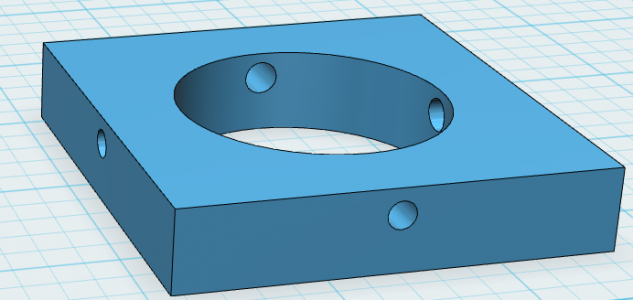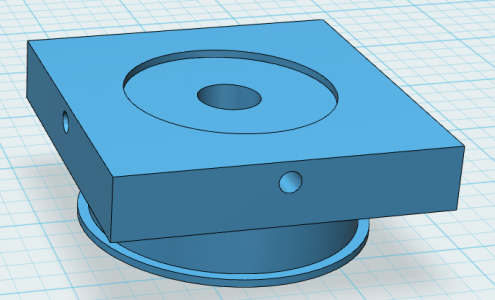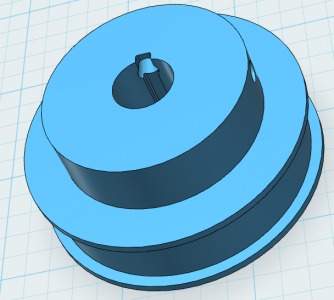The machining on the ELS is complete! I am just waiting for a timing belt to come in for the Servo to Lead Screw link. I will provide some photos when the belt comes in. I want to thank wobblyhand for his offer to broach the Lead Screw pulley. Unfortunately, it turned out he didn't have the necessary sized broach, but the helpful attitude is an extremely valuable thing. The key is a rather tiny 3mm square pin. I suppose I could have taken out the Lead Screw and machined a wider slot, but instead I decided to mill out a slot in the pulley.
I took a piece of 1/2" Aluminum plate, cut out a 2.5" chunk, and milled it square. I took my nearest sized hole saw, drilled a hole in the center of the block, and then used a boring head to carefully expand the hole to a close fit over the pulley hub. I drilled 4 holes on the sides of the block, 2 of them 5mm and 2 of them 4.2mm diameter. I tapped the 4.2mm holes and inserted set screws. Then I put 2 set screws into the existing tapped holes in the pulley, driving them in below the surface.

I seated the pulley into the block, and withdrew the set screws out of the hub part way into the 5mm clearance holes in the block. Then I seated the set screws in the block down on the pulley on the other two sides.

Setting the pulley face down on a pair of parallels in the vise, I took a 3mm end mill with extra long flutes I had on hand and plunged it down the side of the hub in line with one of the set screw holes. I took a needle file and squared off the bottom of the slot by hand. It fits perfectly!

The 3D printed gear on the encoder seems to be working a treat. It is very quiet - far, far quieter than the stock cast iron gears supplied with the lathe. I ran the lathe all the way up to 3000 RPM for several minutes, and the result was pleasantly non-dramatic. Running the lathe over 1200 RPM or so always used to make me slightly uneasy, not to mention having to wear hearing protectors if I was doing any work for an extended period time. Now it purrs like a kitten.




